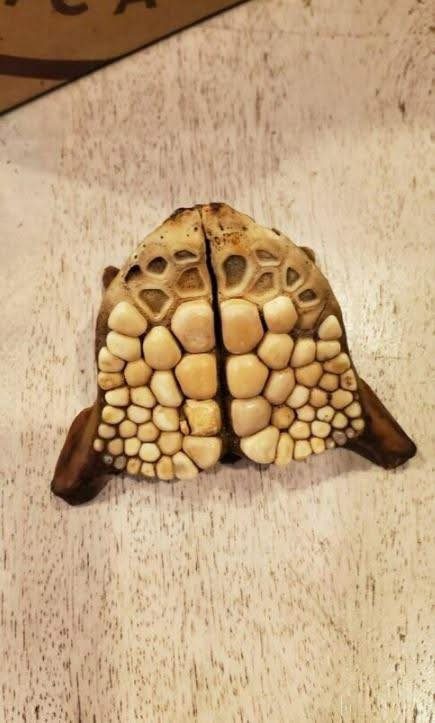“A Florida Beach Discovery That Has Remained a Mystery for 20 Years”
20-Year Mystery Found on a Florida Beach
If you’ve ever combed a beach, you know the thrill of spotting something unusual — a twisted shell, a piece of driftwood, or, if you’re lucky, something truly puzzling. That’s exactly what happened to a beachcomber in Pensacola, Fla.
A Strange Discovery
While walking along the shore, they stumbled upon a strange, toothy object that looked fossilized. Intrigued, they spent the next two decades trying to identify it. Marine biologists? Stumped. Museum experts? Also stumped. The object baffled everyone who examined it.
The Answer: Freshwater Drum Pharyngeal Teeth
Eventually, the mystery was solved. That odd-looking item wasn’t an ancient fossil — it was the pharyngeal teeth of a freshwater drum fish (Aplodinotus grunniens), also called a drum. Unlike most fish, which have sharp teeth in their mouths, freshwater drums have flat, grinding teeth in their throats. These “pharyngeal teeth” crush hard-shelled prey like clams and snails — essentially molars, not fangs.
Why They Look So Strange
The pharyngeal teeth appear unlike typical fish teeth. They are densely packed and resemble tiny mosaics or fossilized coral. This prehistoric appearance added to the puzzle, making a discovery on a beach seem like something from a museum rather than a fish.
How Freshwater Teeth End Up on a Saltwater Beach
Freshwater drums inhabit rivers and lakes across North America. So how did their throat teeth wash up on a Florida beach? These fish can survive in brackish water, where saltwater and freshwater mix, like estuaries. Ocean currents or shifting tides likely carried the remains to the Gulf, where the object eventually appeared on shore.
Nature’s Ingenious Design
The drum’s molar-like teeth allow it to eat prey that other fish can’t, such as clams, snails, and mussels. This adaptation not only ensures the drum’s survival but also helps maintain balance in freshwater ecosystems.
Mystery Solved and a Lesson in Evolution
After years of speculation, the beachcomber finally had an answer. Identifying the object as freshwater drum pharyngeal teeth offered more than closure; it provided insight into nature’s clever evolutionary solutions.
So next time you find something strange in the sand, remember: it might be one of nature’s hidden marvels, waiting for decades to reveal its secret.






